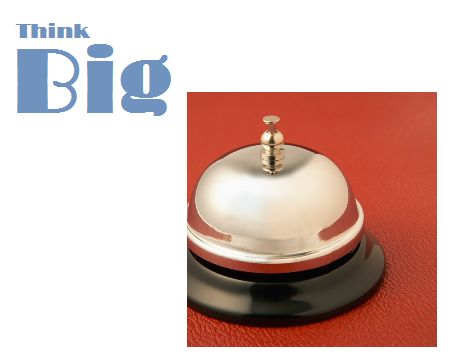Product companies (especially those focused on the Enterprise) always face pressures, primarily that of cash flow in the earlier years, forcing them to take on more services components. This is especially true in countries like India where angel and venture investments are not as plentiful as in Silicon Valley. This is a trap that product companies will find it difficult to emerge from once they get into it.
Just to be clear – there is nothing wrong in being a services company! In many ways, it has better cash flow profiles in the earlier years enabling companies to ramp up with additional people and “projects”. But, you may not be able to make progress on your product vision, unfortunately!
How do you avoid this situation? Here are 7 ways you can avoid this trap:
1. Stick to your Vision, Test and Pivot: As we learn more about Lean Startups, one of the best ways to avoid becoming a services company is to make sure that your product is needed, clients will pay for it and you can build a company on it! You talk to potential clients before you build the product. Even then, you build only a Minimum Viable Product (MVP), roll it out and test your hypotheses by getting to revenues. If revenues are minimal or non-existent, you pivot and build something that someone will pay money for, and soon!
2. Build Features Based on How many Users Ask For Them: In one of our enterprise product companies, we had a simple rule – If one client asks for it, it goes into the backlog list. If two clients ask for it, it goes into the next major release. If three clients ask for it, it goes into the next sprint!
3. Turn Custom Components into Product Features if you can: Try not to build components for any one client. Parameterize the client’s requirement into a more general idea and make what they are asking for, a specific case of that! For example, if they require your product to work with a certain brand of a reporting tool, think of how you can generalize it so that it can work with most reporting tools. You may need to build additional components but it will be worth it when the next client needs your product to work with another brand of a reporting tool!
4. Line up Services Partners Early: Large product companies deliberately price their professional services much higher than their service partner ecosystem does. For example, if you were to source Oracle product expertise from Oracle, it will be an order of magnitude more expensive than obtaining it from a service partner of theirs. That’s how they prevent themselves from being sucked into spending too much time on services and away from their products. For small product companies this may be difficult to do, but if you find service partners who are also service partners for related products, they may be interested. It will involve sharing your revenues but that’s the tradeoff!
5. Line up Product Partners Early: Products have natural boundaries and it’s good to recognize them early on and bring in product partners that do those things better. For example, if your product addresses a specific vertical with a core solution, line up product partners for related needs like reporting, social media integration, telephony integration, etc. You cannot be everything to your clients and identifying related product partners early on will help you avoid the trap of reinventing all related wheels all over again! Of course, you need to architect your product in such a way that it can easily integrate with other solutions!
6. Refuse Non-Core Competency Opportunities: This is easy to say but tough to follow in real-life if you are a product startup. If a client offers you money to do a related thing but not quite what you were hoping to sell, you may need to refuse it! But that’s exactly what a product startup needs to do to stay true to its vision. If three clients ask for this other thing, that’s a Pivot! Take it and go forward!
7. Plan ahead for Cash Flow Pressures: Product companies are not for the faint hearted! Do not embark on even writing one line of code before you talk to potential prospects about your ideas, show them sketches of what you were thinking about, and finding out what they are willing to spend for such a solution. If you are already well into having two or three clients and it is a case of scaling, you may need to pivot to products that could scale up better, faster.
It pays well to remember that with product companies the goal is to write code once, get paid many times. With services companies, you write code once, you get paid once! Very rarely do you get to write code and retain the Intellectual Property that is general, and can quickly be sold to other clients, unless you subsidize the initial development substantially!
Again, there is nothing wrong with being a services company. It has its plusses and minuses, but without paying attention to strategy, proper architecture and partners, you could end up becoming a services company when you want to go the other way!
I already am a product – Lady Gaga



